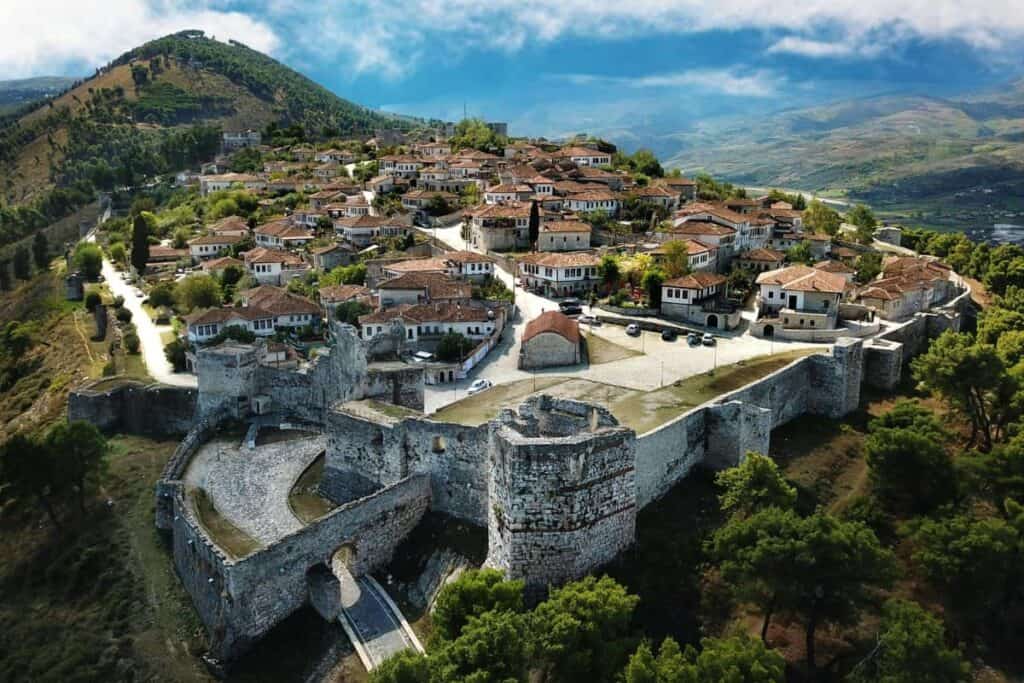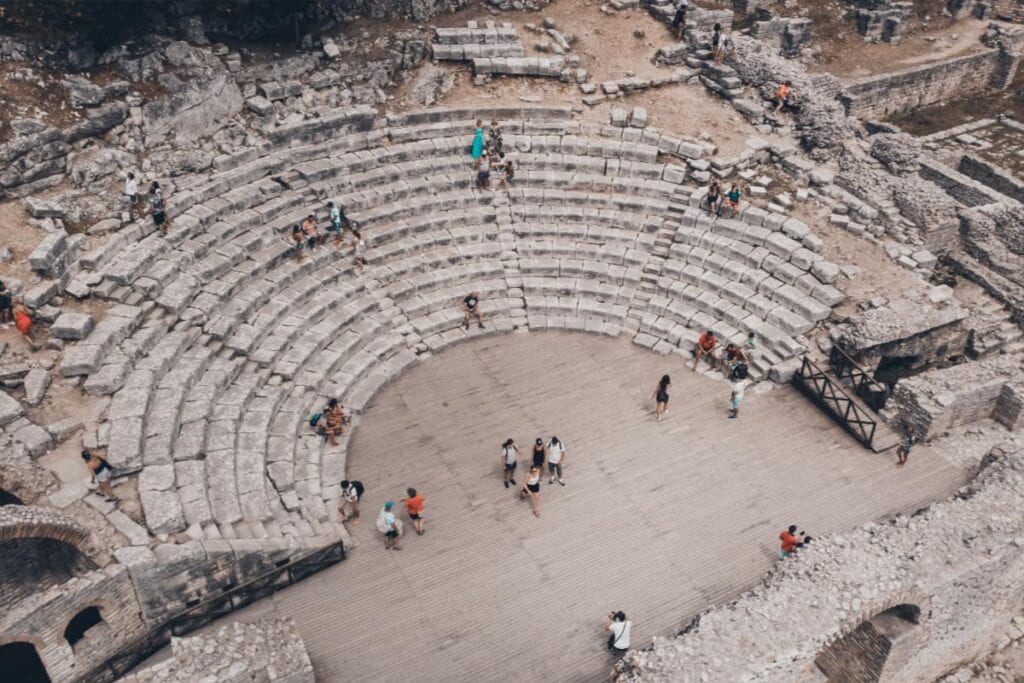Introduction
Albania is a treasure trove of ancient ruins that tell the stories of empires and civilizations spanning thousands of years. From Greek city-states to Roman settlements, these archaeological sites offer a fascinating glimpse into the country’s rich history. This guide explores the most remarkable ancient ruins in Albania and what makes them so special.
1. Butrint National Park: Albania’s Most Famous Ruins
Designated a UNESCO World Heritage Site, Butrint is Albania’s most renowned archaeological site. This ancient city was inhabited by Greeks, Romans, Byzantines, and Venetians.
Highlights:
- The Amphitheater: A well-preserved structure with a capacity of 2,500 spectators.
- The Basilica: Featuring intricate mosaic floors that tell stories of early Christianity.
- The Lion Gate: An iconic defensive structure adorned with carvings.
Why Visit: Butrint is a captivating mix of history and natural beauty, set against the backdrop of a tranquil lagoon.
2. Apollonia: A Center of Ancient Learning
Located near Fier, Apollonia was one of the most important cities in the ancient Greek and Roman world. Established in the 6th century BC, it was renowned for its school of philosophy.
What to See:
- The Bouleuterion: A council chamber used for governance in the Greek period.
- The Monastery of St. Mary: Featuring a small museum with artifacts from the site.
- The Odeon: A small theater where plays and political debates were held.
Tip: Visit during the spring for pleasant weather and blooming wildflowers.
3. Byllis: The Overlooked Gem
Situated on a hilltop overlooking the Vjosa River, Byllis is one of Albania’s largest ancient cities. Although less visited than Butrint or Apollonia, it offers equally impressive ruins.
Key Attractions:
- The Roman Forum: A central gathering place adorned with columns.
- The Basilica: Known for its intricate mosaics and stunning views of the valley.
- The Stadium: Once used for sports and public gatherings.
Why Visit: Byllis offers a quieter, more intimate exploration of Albania’s ancient past.
4. Amantia: A Fortress with a View
Perched in the hills of southern Albania, Amantia was once a powerful Illyrian city. Its strategic location made it an important center for trade and defense.
Must-See Sites:
- The Stadium: Built in the 3rd century BC, it offers breathtaking views of the surrounding mountains.
- The Acropolis: A fortified area with remnants of ancient walls and gates.
Tip: Combine your visit with nearby coastal attractions like the Albanian Riviera.
5. Durrës Amphitheater: Roman Marvel by the Sea
Located in the bustling coastal city of Durrës, this 2nd-century Roman amphitheater is one of the largest in the Balkans.
What to Explore:
- The Underground Chambers: Once used to house gladiators and wild animals.
- Byzantine Chapel: Adorned with early Christian mosaics.
Why It’s Unique: The amphitheater is nestled within the modern city, creating a striking contrast between past and present.
6. The Castle of Rozafa: A Mythical Stronghold
Though primarily a fortress, Rozafa Castle near Shkodër has ancient origins dating back to the Illyrians. It’s steeped in legend and offers stunning views of the surrounding rivers and mountains.
Legend: According to local folklore, the castle was built with the sacrifice of a young woman, whose spirit is said to protect it.
Why Visit: Rozafa combines history with myth, creating a memorable experience.
7. Nikopolis: The City of Victory
Founded by Emperor Augustus in 31 BC, Nikopolis commemorates his victory in the Battle of Actium. The site is located near Preveza, close to the Albanian border.
Highlights:
- The Ancient Theater: Once used for performances and gatherings.
- The Roman Aqueduct: A marvel of ancient engineering.
Tip: Visit as part of a day trip that includes southern Albania and northern Greece.
8. Antigonea: A Tribute to Love
Antigonea was established by King Pyrrhus of Epirus in honor of his wife, Antigone. Nestled in the hills of Gjirokastër, it offers stunning views and well-preserved ruins.
What to See:
- The City Walls: Stretching over 4 kilometers, they once protected this ancient settlement.
- The Agora: A central marketplace where trade and social gatherings occurred.
Why Visit: The combination of history and romance makes Antigonea a unique destination.
Tips for Exploring Albania’s Ancient Ruins
- Hire a Guide: Local guides provide fascinating insights and stories about each site.
- Wear Comfortable Shoes: Many ruins involve uneven terrain and significant walking.
- Visit Early or Late: Beat the crowds and enjoy cooler temperatures by visiting in the morning or evening.
Why Albania’s Ancient Ruins Are Special
Albania’s ancient sites offer more than just historical significance—they provide a connection to the civilizations that shaped the country’s identity. Each ruin has a unique story to tell, set against the backdrop of stunning landscapes.
Conclusion
From the grandeur of Butrint to the lesser-known charm of Byllis, Albania’s ancient ruins are a must-see for history enthusiasts and curious travelers alike. Plan your journey today and uncover the stories of Albania’s remarkable past.


